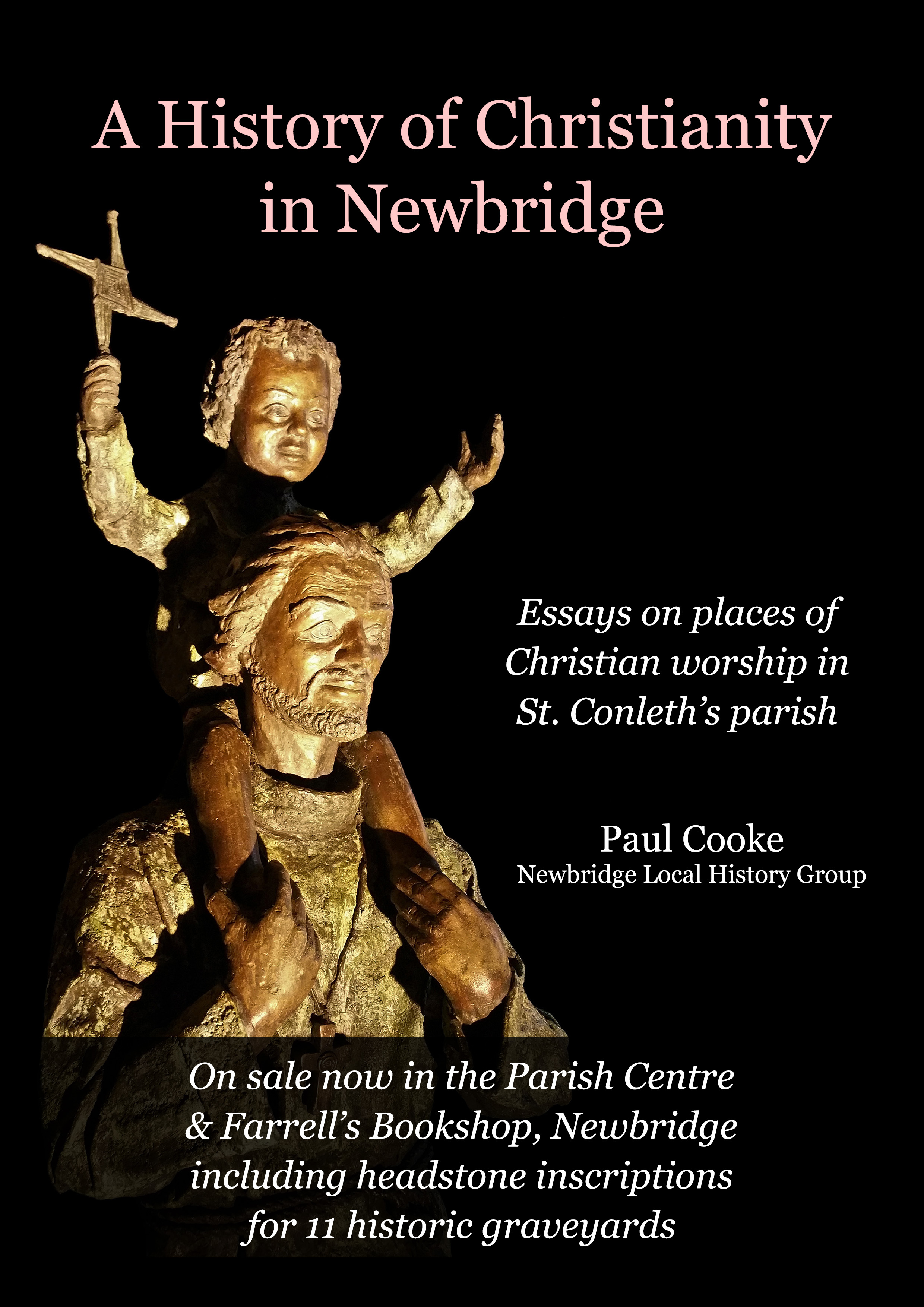The Liffey at Roseberry by Breda Reid.
Our slice of the Liffey.
I would love to live like a river flows, carried by the surprise of its own unfolding.”
― John O'Donohue
The Liffey runs by our town but not through it. Running east to west it intersects the Naas/Dublin road at its northern end. Curving leisurely through the strand, it meanders past the old watering gates, once utilised by the British Cavalry, then onwards through the park before coursing under the bridge that gives our town its name- Newbridge or Droichead Nua.
It continues towards theDominicanCollegesometimes at full spate if the dam at Poulaphouca has been released. It rushes over the weir like a line of steeplechasers taking fences at Punchestown.
At the weir, the river separates, and a small run is channelled from the main body of water becoming the Mill Race which served the Dominican Friary, founded in 1756.
From the College, the Mill Race makes its way past the Mill Shed used for milling flour in earlier times. Then it continues behind a row of 8 houses called Roseberry Terrace. The Mill Race is part of the fabric of my childhood. There were dire warnings to all local children about going near it. Unlike the field drains in which we occasionally came a cropper, the Mill Race had a treacherous flow owing to its nature as a conduit of water power. Cautionary tales of its danger were told. How little Brian Doherty, only 5 years old, followed the family cat out the back door and was drowned. His little body, we were told, was carried on to the river where it was later discovered. Or how the two Donnelly boys fell in and were saved in a nick of time by their aunt Mary.
Another dread was eels. Aunt Nancy who lived on Roseberry Terrace used to regale me with tales of her cat proudly dragging eels, some six feet long, into the house.Nancywould stand on a chair until Uncle Blarney with the aid of a brush handle deposited it outside. We lived on the commons, as the area was known. A little cul de sac of cottages most of which had no indoor plumbing or running water until the early 1960s. So, under cover of darkness, sojourns to the Mill Race with buckets of sewage were undertaken by the men. Luckily enough, as far as I know, no one followed the contents of the bucket into the fast-flowing water.
The Mill Race re-joins the river about 500 meters further down. Just before the “Jetty” as it was known to the big lads who used to go swimming there. There was a makeshift diving board from which they would launch themselves into the water. We smaller individuals watched in envy and awe at their prowess. We had to content ourselves with the shallower waters at the park near the bridge. Children of the 50s and 60s, few of us had holidays at the seaside. The park was our beach. We wore old sandals to protect our feet as the river bed was rough and slippery underfoot. With skirts hitched into our knickers, we paddled in the shallow water trying to catch pinkeens in trap bottles while always alert that the flood might rise and whisk us away. Today, thanks to the Tidy Towns Committee, the Park and theStrand are superb amenity areas well-used by the locals.
As a child, growing up near a river was something I took for granted. But with age comes awareness and gratitude for its life-affirming presence. According to Heraclitus “No man steps in the same river twice, for it’s not the same river and he’s not the same man.” To me, a flowing river embodies the passage of time. Always going forward, unable to look or go back it is a reminder to enjoy every moment of our life as it unfolds.
© Breda Reid. 2022.
.

